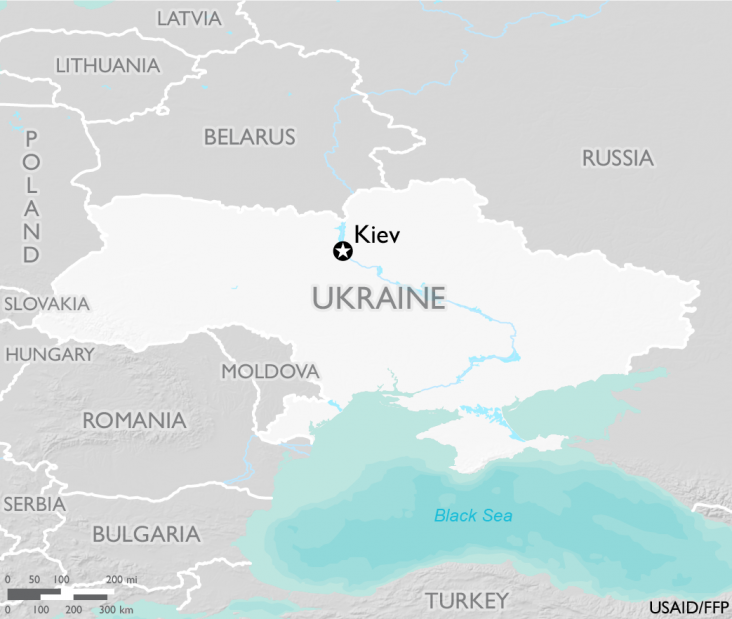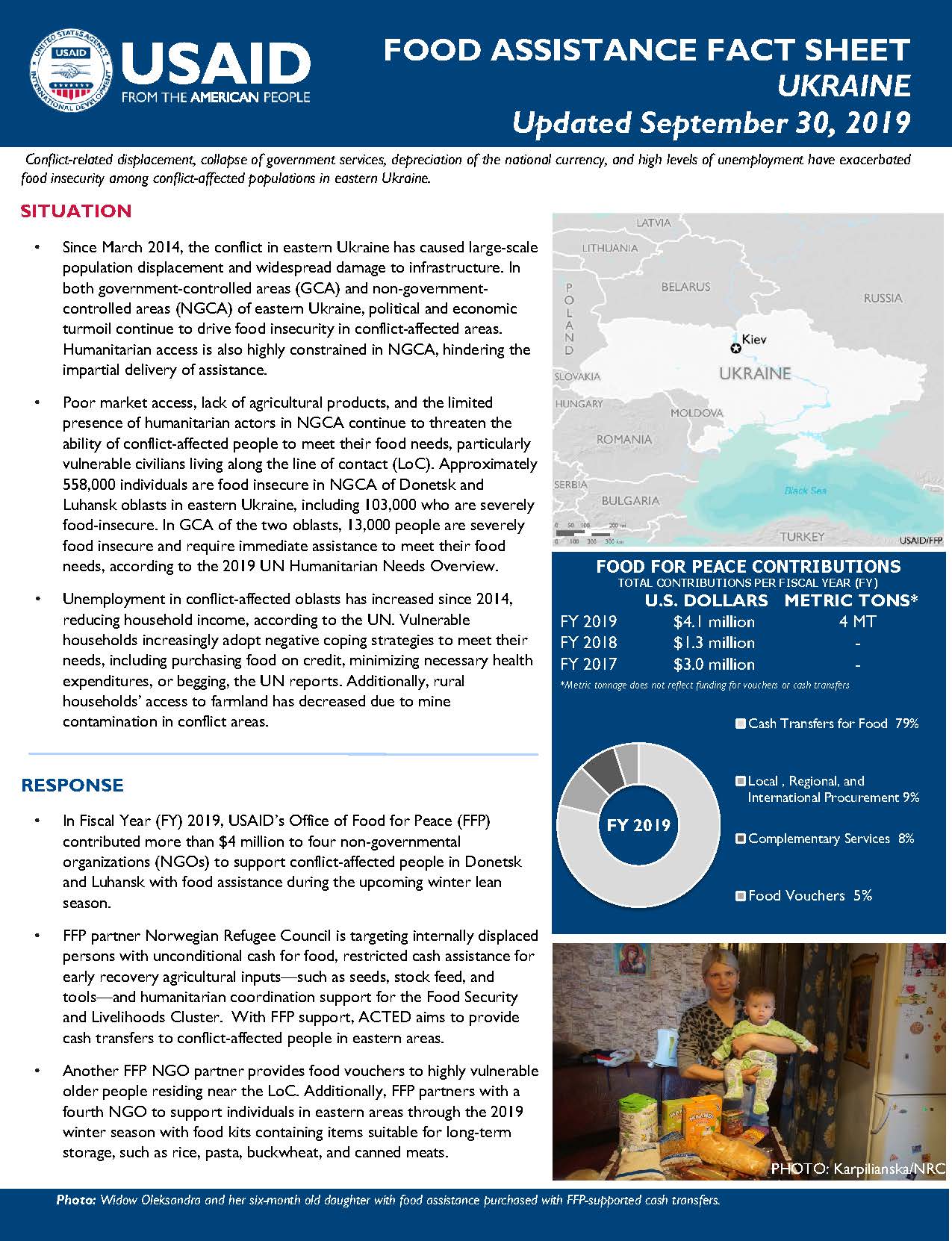Home » What We Do » Agriculture and Food Security » Food Assistance » Where We Work » Food Assistance Fact Sheet - Ukraine
- What We Do
- Agriculture and Food Security
- Democracy, Human Rights and Governance
- Economic Growth and Trade
- Education
- Environment and Global Climate Change
- Gender Equality and Women's Empowerment
- Global Health
- Humanitarian Assistance
- Transformation at USAID
- Water and Sanitation
- Working in Crises and Conflict
- U.S. Global Development Lab
Speeches Shim

September 30, 2019
Conflict-related displacement, collapse of government services, depreciation of the national currency, and high levels of unemployment have exacerbated food insecurity among conflict-affected populations in eastern Ukraine.
Situation
- Since March 2014, the conflict in eastern Ukraine has caused large-scale population displacement and widespread damage to infrastructure. In both government-controlled areas (GCA) and non-government-controlled areas (NGCA) of eastern Ukraine, political and economic turmoil continue to drive food insecurity in conflict-affected areas. Humanitarian access is also highly constrained in NGCA, hindering the impartial delivery of assistance.
- Poor market access, lack of agricultural products, and the limited presence of humanitarian actors in NGCA continue to threaten the ability of conflict-affected people to meet their food needs, particularly vulnerable civilians living along the line of contact (LoC). Approximately 558,000 individuals are food insecure in NGCA of Donetsk and Luhansk oblasts in eastern Ukraine, including 103,000 who are severely food-insecure. In GCA of the two oblasts, 13,000 people are severely food insecure and require immediate assistance to meet their food needs, according to the 2019 UN Humanitarian Needs Overview.
- Unemployment in conflict-affected oblasts has increased since 2014, reducing household income, according to the UN. Vulnerable households increasingly adopt negative coping strategies to meet their needs, including purchasing food on credit, minimizing necessary health expenditures, or begging, the UN reports. Additionally, rural households’ access to farmland has decreased due to mine contamination in conflict areas.
Food Assistance Fact Sheet - Ukraine ![]() (pdf - 262k)
(pdf - 262k)
Response
- In Fiscal Year 2019, USAID’s Office of Food for Peace (FFP) contributed more than $4 million to four non-governmental organizations (NGOs) to support conflict-affected people in Donetsk and Luhansk with food assistance during the upcoming winter lean season.
- FFP partner Norwegian Refugee Council is targeting internally displaced persons with unconditional cash for food, restricted cash assistance for early recovery agricultural inputs—such as seeds, stock feed, and tools—and humanitarian coordination support for the Food Security and Livelihoods Cluster. With FFP support, ACTED aims to provide cash transfers to conflict-affected people in eastern areas.
- Another FFP NGO partner provides food vouchers to highly vulnerable older people residing near the LoC. Additionally, FFP partners with a fourth NGO to support individuals in eastern areas through the 2019 winter season with food kits containing items suitable for long-term storage, such as rice, pasta, buckwheat, and canned meats.
Food for Peace Contributions
Total Contributions:
| U.S. Dollars | Metric Tons | |
|---|---|---|
| Fiscal Year 2019 | $4.1 million | 4 MT |
| Fiscal Year 2018 | $1.3 million | ---- |
| Fiscal Year 2017 | $3.0 million | ---- |
*Metric tonnage does not reflect funding for vouchers or cash transfers.


Comment
Make a general inquiry or suggest an improvement.